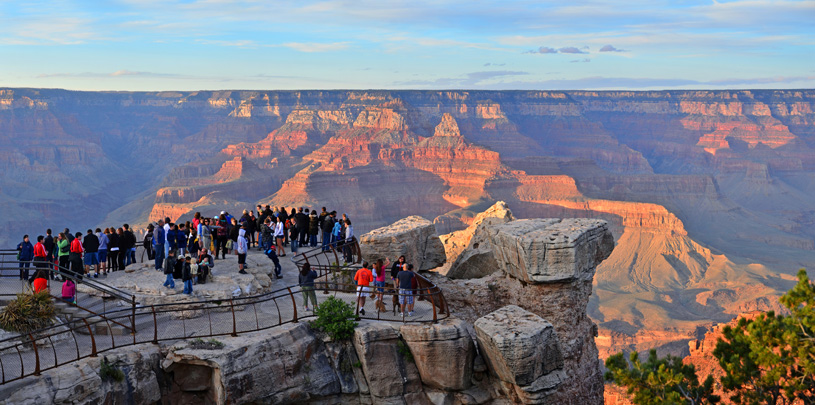
 by Amber Reimondo, Energy Director
by Amber Reimondo, Energy Director
For the latest update on the fight to safeguard the Grand Canyon region from new uranium mines, it’s useful to explore an interesting phenomenon at the confluence of economics and politics.
If you own a mining company, to make a profit by mining a certain commodity, you need the value of that commodity to be higher than your cost of operation, right? Anyone who took economics 101 knows that for any given product to have a high dollar value, there has to be sufficiently high demand for a sufficiently low supply.
A company already invested in mining a commodity — uranium, for instance — is probably not going to be excited about waiting for an unfavorable market to improve. So to make things move along more quickly, they might try to lobby decision-makers and government leaders for shortcuts that artificially increase the value of their product so that it suddenly becomes profitable to mine. How? Well that’s where things get interesting.
On December 20, 2017, President Trump signed an executive order directing Interior Secretary Ryan Zinke to develop a list of “critical minerals” by mid-February 2018. It directs the Department of Commerce to subsequently develop a strategy that will, among other things, “support private sector mineral exploration of critical minerals” and provide “recommendations to streamline permitting and review processes” for critical mineral development.
Last month, on January 16, uranium operators Energy Fuels and Ur-Energy filed a joint petition with the Department of Commerce claiming that uranium is essential, not just for nuclear energy, but to national security, and that the U.S. government needs to take steps “to foster a healthy domestic uranium mining industry.” If it doesn’t, they claim, “the defense stockpiles currently held by the DOE will be depleted, and it is unlikely that domestic producers will have sufficient capabilities to meet our defense needs in the future.”
Critical minerals are defined in President Trump’s December 20 executive order as “a mineral identified by the Secretary of the Interior…to be (i) a non-fuel mineral or mineral material essential to the economic and national security of the United States, (ii) the supply chain of which is vulnerable to disruption, and (iii) that serves an essential function in the manufacturing of a product, the absence of which would have significant consequences for our economy or our national security.”
The United States Geological Survey recently updated its own list of critical minerals, which doesn’t include uranium, but includes vanadium — a mineral that is often co-extracted with uranium from sandstones on the Colorado Plateau and used in the strengthening of steel. For example, the La Sal Complex, an Energy Fuels-owned group of uranium mines near Moab, Utah, also has vanadium deposits. Energy Fuels’ White Mesa Mill — the only operating conventional uranium mill in the United States — is also licensed to process vanadium.
The Trump administration may very well name uranium and/or vanadium as a critical mineral for which a strategy will be created to foster and streamline private development. What’s more, other minerals present in the Grand Canyon region could also be listed. That means that even if uranium isn’t included, political pressure would still rise to lift a 2012 ban on new mines around Grand Canyon National Park, which would reopen the area to new uranium claims and extraction anyway.
Despite poor prices, it’s clear that some private uranium companies, like Energy Fuels — owner of the Canyon Mine, near the Grand Canyon’s south rim, the White Mesa Mill in southeastern Utah, and many more claims around the Grand Canyon — are working the system hard to benefit their own pocket books. That means that you and I have a serious job to do if we want to keep private profit from taking precedence over the environment and public health.
In addition to closely tracking the critical minerals aspect of this issue, the Grand Canyon Trust is also hard at work in the courts. In December, the 9th Circuit Court of Appeals denied a challenge brought by the Grand Canyon Trust and our partners to a Forest Service determination that Canyon Mine could operate despite the 2012 mining ban in the area. In late January, we filed a petition for rehearing en banc asking the court as a whole to reconsider its decision. As of this writing, the main shaft at Canyon Mine has been finished, but the company has yet to begin hauling ore, in large part because uranium prices are low.
80% of Arizona voters support Baaj Nwaavjo I'tah Kukveni National Monument, according to a new poll.
Read MoreThe Colorado River below Glen Canyon Dam is heating up. Find out why.
Read MoreGroundwater pumping at a uranium mine near the Grand Canyon will affect the canyon's springs, scientists says.
Read More